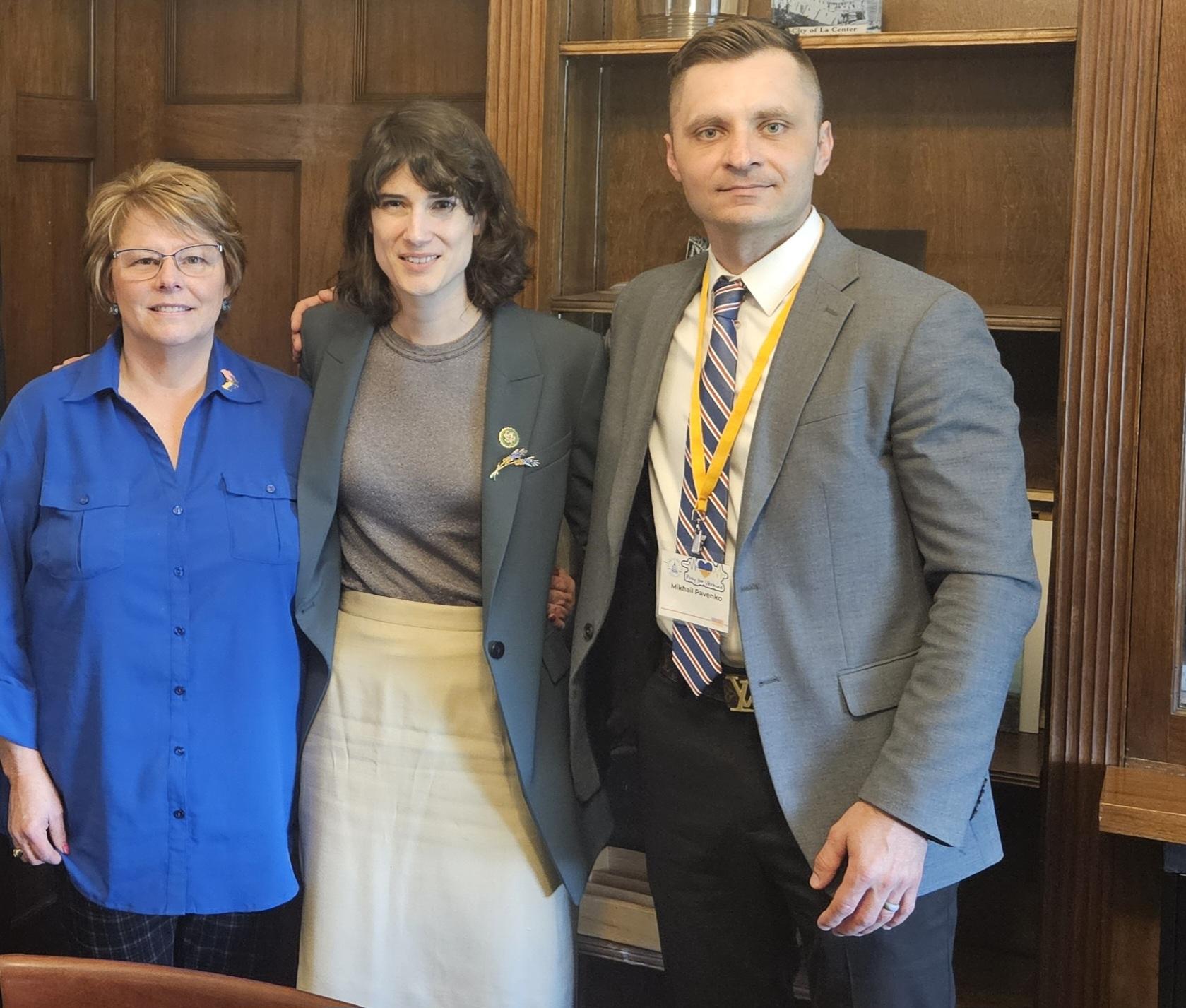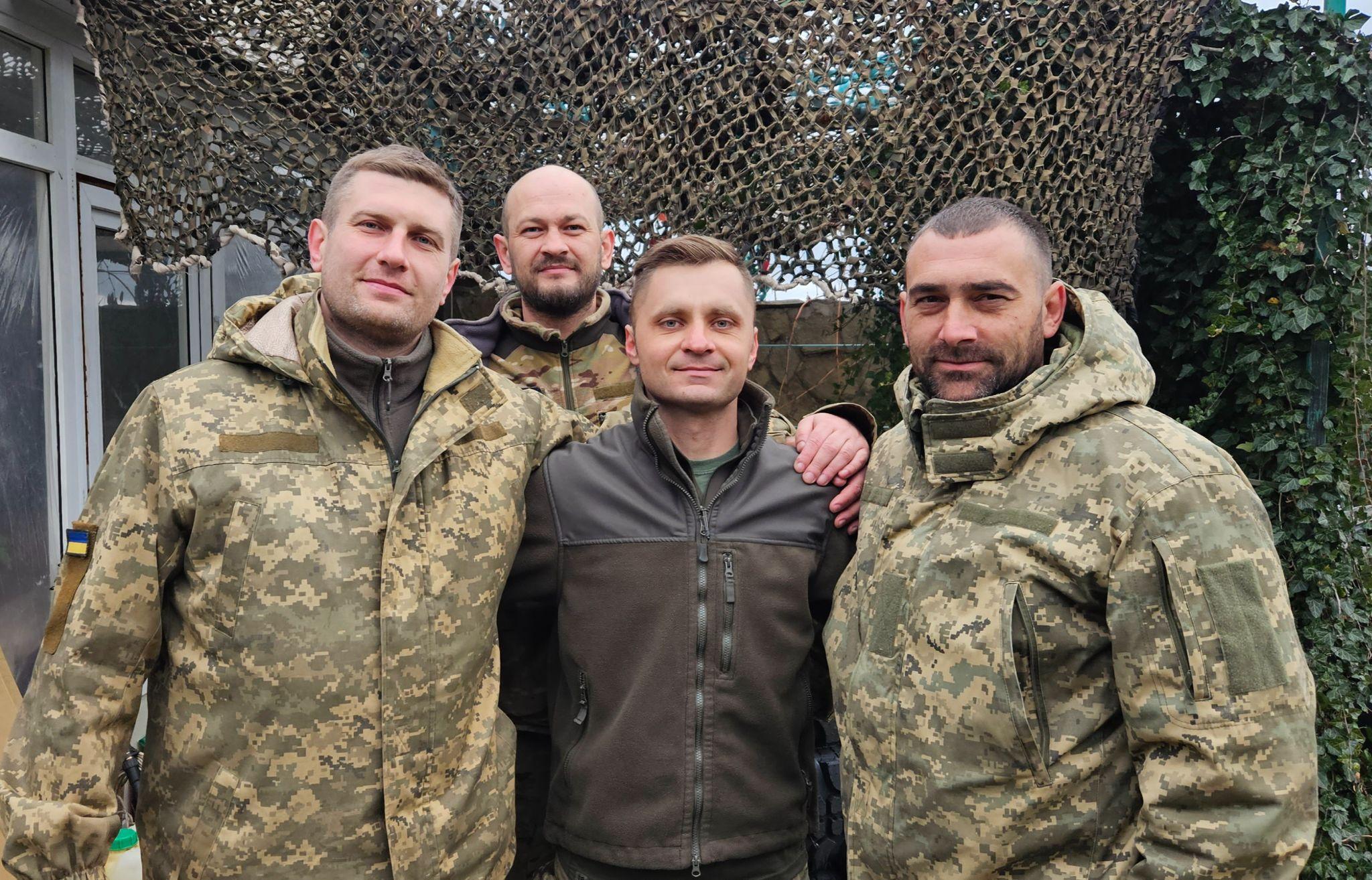As the world braces for the US presidential election, Ukraine’s future teeters on the edge. But beyond Ukraine, where many anxiously await the outcome that will shape crucial American support, another community also faces a make-or-break moment: Ukrainian Americans.
All eyes are on a high-stakes congressional race in Washington State, home to a sizable Ukrainian American community, where a strong Ukrainian vote could tip the balance in Congress.
As of 2021, the US was home to nearly 1 million Americans of Ukrainian descent. Since Russia’s full-scale invasion, around 270,000 Ukrainians have sought refuge in the US, with nearly 187,000 arriving through the Uniting for Ukraine sponsorship program.
This wave of newcomers has injected fresh diversity and complexity into the fragmented Ukrainian American community, potentially tipping the scales in the razor-thin presidential election, which threatens to trigger earth-shattering repercussions for the international order.
Two wars plaguing same community
The generational divide, along with the speculation surrounding Ukraine’s aid in US politics, highlights a clear rift between the long-established Ukrainian diaspora and the newly arrived Ukrainians regarding American policy on their ancestral country.
This is especially evident in northwestern Washington State, which has the third largest Ukrainian population in the US, trailing California and New York.
An established immigrant community of Ukrainians in Washington state is one of the main reasons Ukrainian refugees chose to flock there during the full-scale war, making them the fastest-growing European immigrant community in the state.
However, the local community is on the brink of a major division, as many—if not a majority—of Ukrainians in the state are likely to support Donald Trump and Republican US House nominee Joe Kent, who previously described Putin’s demands regarding Ukraine as “very reasonable.”

Kent also tweeted in 2022 that “Zelenskyy was installed via a US-backed color revolution; his goal is to push his country westward while virtue signaling woke ideology and using Nazi battalions to crush his enemies.” Recently, Donald Trump participated in a tele-town hall to support Kent’s campaign.
In 2022, congresswoman Marie Gluesenkamp Perez narrowly defeated the Trump-endorsed veteran, bringing southwest Washington under Democratic control for the first time in over a decade.
At one of Kent’s rallies, Peter Manelyuk, a Ukrainian American from Vancouver, Washington, sought to confront him about his anti-Ukraine stance.
Manelyuk shared that he had met Joe Kent at a rally, where he and his brothers waited until everyone else had left to secure his full attention. They ended up discussing their views for about two hours, hoping to change Kent’s mind.
“I tried to convey that Ukrainians are fighting for the same values the Republican Party stands for—freedom, faith, and country,” he said.
However, he noted that Kent continued to promote certain Kremlin talking points and ultimately refused to change his stance—which likely won’t deter the local Ukrainian community from supporting him.
Four routes to the same destination
The conservative leanings of the Ukrainian American community stem from immigration policies that shaped the state’s demographics, particularly among the latest wave of immigrants.
Many of these individuals found residence in the US due to policies that encouraged the emigration of Jews and Evangelical Christians fleeing Soviet oppression.
Ukrainian immigration to the US is generally divided into four waves: 1890-1914, 1922-1936, 1945-1953, and 1989 to the present. Among these groups, those from the third wave were “more urbanized, better educated, and more passionate about defending Ukrainian identity and independence,” says Ukrainian American academic Anastasia Kharitonova-Gomez.
Post-World War II Ukrainian migration was largely driven by oppressive Soviet policies and a crackdown on the independence movement, compounded by aggressive Russification efforts.
This experience sparked a strong dedication among Ukrainian immigrants to maintain their cultural identity in their new homeland, leading to the active establishment of Ukrainian churches and institutions across the US.
“Members of this wave often say they felt a responsibility to be torchbearers of Ukrainian identity abroad since it was being severely repressed back in the homeland,” she says.
However, migration from this generation faced significant hurdles due to the Soviet Union’s Cold War-era ban on leaving the country.
Oleh Wolowyna, director of the Center for Demographic and Socio-Economic Research of Ukrainians, pointed out that Soviet emigration policies stifled migration until the Jackson-Vanik Amendment of the Trade Act. Signed by President Ford in 1975, this legislation enabled the emigration of those persecuted for their religious beliefs.
In 1989, the US Congress enacted the Lautenberg Amendment, which further streamlined the resettlement of persecuted minorities from the Soviet Union. It significantly benefited Soviet Protestant Christians, including Baptists and Evangelicals, allowing those with “well-established histories of persecution” to seek refuge in the US.
In the decades that followed, around 500,000 Soviet Evangelicals, mostly from Ukraine, resettled in the US as refugees or through family reunification. Even today, many Ukrainians fleeing the war since 2022 have been Protestants, joining family and friends who had already made their homes in the United States.
“Most WWII refugees were Ukrainian Catholics from Western Ukraine,” Wolowyna said, highlighting their strong Ukrainian identity.
“Those coming after Ukraine’s independence were primarily economic migrants, many of whom had a less pronounced Ukrainian identity,” he says.
When prayers turn political
Kharitonova-Gomez points out that religious affiliation is a major force behind Ukrainian partisanship. In the US diaspora, it has flipped the balance of Christian denominations compared to Ukraine itself. This divide has sparked growing tension between generations of Ukrainian migrants.
“Most Ukrainians are Orthodox or Catholic, with only a small percentage identifying as Protestant,” she says. “In the diaspora, however, this is reversed, as many Ukrainians who immigrated in recent decades are Protestants.”
The stark contrast in backgrounds and motivations has fueled a growing divide within the Ukrainian American community, especially between the latest two waves. Third-wave immigrants from the 1940s-50s often fault the fourth wave, arriving since the late 1980s, for lacking patriotism and carrying too much Soviet influence.
Many fourth-wave migrants came seeking economic opportunity, making them less fervent about Ukrainian independence—a tension point that keeps the tension alive.
In sharp contrast, earlier waves of Ukrainian Americans—especially in the Midwest and East Coast—escaped Soviet oppression around World War II.
They largely lean Republican, inspired by the party’s staunch anti-Communist stance, championed by leaders like Ronald Reagan. This deeply ingrained anti-Soviet sentiment, now reignited by Russia’s aggression, remains a powerful force in their views today.
One of them is Orest Deychakiwsky, a former staffer for the US Helsinki Commission. As a member of a third-wave immigrant family, he has stepped up to launch the Ukrainian Americans for Harris-Walz Steering Committee. Orest is leading the charge to rally Ukrainian Americans in support of Kamala Harris for president.

Kharitonova-Gomez highlights that this religious divide shines a light on the broader political fractures within the Ukrainian American community. Evangelical Protestants usually lean Republican, while those without religious ties or non-evangelical Protestants tend to back Democrats.
Meanwhile, Catholic and Orthodox Ukrainians often stick to more conservative positions, adding further complexity to the community’s already complicated political landscape.
She notes that Ukrainian identity and concerns about Ukraine rarely top the list when it comes to how Ukrainian Americans vote. Instead, religious affiliation takes the spotlight, leading many eligible Ukrainian voters in Washington State to throw their support behind Trump.
“Ukrainian identity is not strong among most Protestants; religion is the predominant factor in their identity,” Wolovyna agrees.
Ukrainian faith, American vote
However, Trump’s relentless attacks on Ukraine, its sovereignty, and its right to self-defense have led an increasing number of Protestants to pull away from him. Tensions reached a boiling point in September 2024 when Trump called President Zelenskyy “the greatest salesman.”
This remark has deepened the divide within the Ukrainian American community, prompting many to reconsider their pro-Republican stance.
Russell Korets, a Ukrainian American pastor from Washington State, aptly voiced this growing resentment:
“Ukraine is being bombed daily. Regular civilians are perishing. What else is he supposed to do?” he wrote on his X. “What a painful season. The Lord has completely stripped any hope I had in any political party.”
Some community members are rallying to get Ukrainian Americans to back Perez in her re-election campaign. At the forefront of this movement in Southern Washington is Mikhail Pavenko, a Ukrainian American from Donetsk Oblast who has been a volunteer chaplain in Ukraine since 2014.
“For me, helping Marie goes beyond politics—it’s a question of right and wrong. The aid she crafted has saved thousands of lives in Ukraine,” he says.
His family was tragically among the first casualties of Russian proxies in Sloviansk in 2014, targeted for their religious beliefs.

Pavenko, whose family was slain by Russia for their Protestant faith, stepped up to serve as a chaplain for the Ukrainian army. Photo courtesy of Mikhail Pavenko.
Pavenko has been actively campaigning for Perez, though his efforts haven’t come without controversy. Some Ukrainian Americans in the community have criticized him for backing a Democrat.
However, for Pavenko, backing a pro-Ukrainian candidate goes beyond electoral aspect:
“Standing with those who fight for their lives isn’t a partisan issue — it’s the American way.”
Pavenko views himself as a devoted believer who embodies the values of a Reagan-style Republican. He passionately champions national and personal freedom, firmly believing that Republican ideology should back those who stand up for their rights.
“I stand for national and personal freedom, and I believe we must support those who fight for freedom against tyranny and occupation,” said Pavenko.
Despite being a lifelong Republican and facing backlash from the Ukrainian American community in Washington State, Pavenko is resolute in his mission to make a difference as the vote for Perez will likely come down to the slimmest of margins:
“When America leads and stands strong, the world is a safer place. That’s what I believe in.”
Related:
• Ukraine plans for two Americas: Harris aid or Trump peace push
• 5 ways Russia is trying to sway 2024 US elections
• Kamala Harris must fix Biden’s mistakes in Ukraine
• Trump’s “peace plan” is a blueprint for Russian victory over Ukraine and West




